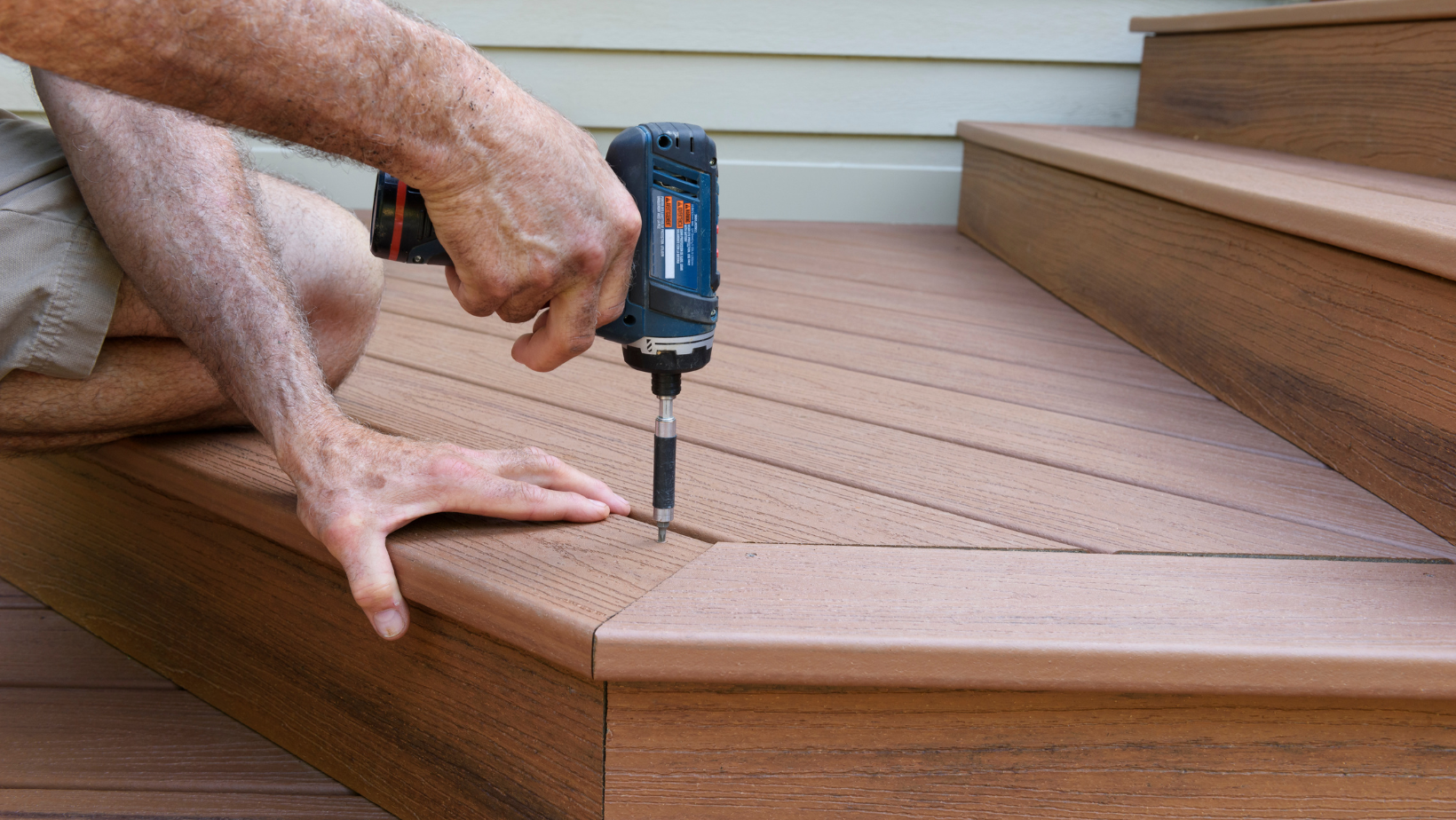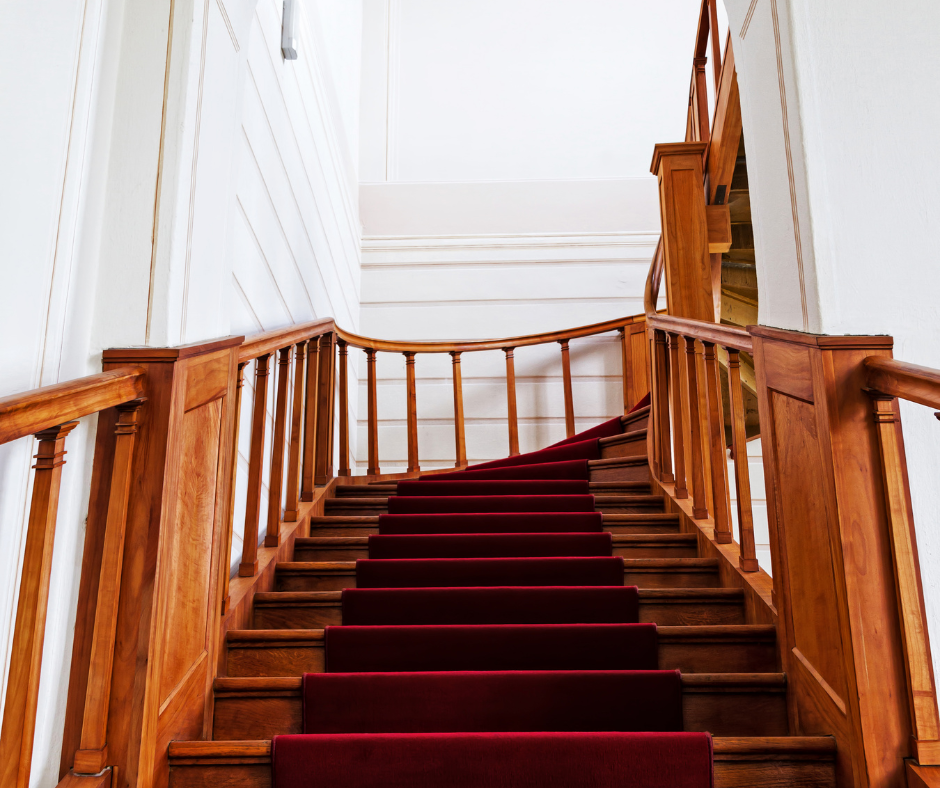Slippery wood stairs might look beautiful, but they can be downright dangerous for families with kids, pets, or older adults.
The best way to answer how to fix slippery wood stairs is by adding carpet stair treads, which instantly improve traction and reduce the risk of falls.
In this guide, you’ll learn practical solutions, material tips, and expert advice to make your stairs safer without losing their charm.
You’ll also discover how to choose the right product for your home, whether you're after comfort, durability, or simple DIY convenience.
From fiber types to install methods, we’ll walk you through everything you need to know.
Let’s make your stairs safer, smarter, and more stylish—step by step.
Why Wood Stairs Become Slippery Over Time
Wood has a naturally smooth surface, and while that adds elegance to your home, it can also create risk.
Over time, foot traffic wears down the finish.
Add in socks, pet paws, moisture, or dust, and the stairs become a slip-and-fall waiting to happen.
In homes with high traffic, shiny hardwood stairs become even more dangerous—especially at the top and bottom where people rush.
This is exactly why many homeowners start asking how to make your wood stairs less slippery in the first place.
Why Fixing Slippery Stairs Is So Important
A single slip can change everything.
Whether it’s a toddler tumbling down or an elderly parent taking a misstep, stair-related injuries can be serious.
And beyond safety, making your stairs slip-resistant can:
-
Add comfort to your daily routine
-
Prevent long-term damage to your hardwood
-
Improve resale value and market appeal
-
Give you peace of mind every time someone climbs those stairs
Safety and comfort don’t have to clash.
You can have both—and it’s easier than you think.
Why Carpet Stair Treads Are the Smartest Fix for Slippery Stairs
If you’ve been searching for what to put on wood stairs to prevent slipping, carpet stair treads are one of the best answers.
They're easy to install, cost-effective, and can completely transform your stairs with color and texture.
Why Carpet Stair Treads Work
Carpet treads break up the smoothness of the wood with a textured surface that naturally increases traction.
And when designed well, they don’t just make stairs safer—they make them look better too.
Top Benefits
-
Improved Grip: The added texture prevents slips, even in socks.
-
Softer Steps: Adds comfort and warmth with every step.
-
Protects the Wood: Prevents scuffs and scratches from shoes, claws, and heels.
-
Style Options: Available in neutral tones, patterns, or plush finishes to match any décor.
At Oak Valley Designs, we craft stair treads specifically for families.
Our products are designed to be gentle on hardwood, safe for little feet and paws, and easy enough to install without calling in a contractor.
What About Rubber Stair Treads?
Rubber treads are more utilitarian but still effective.
They’re a go-to option in garages, basements, and outdoor steps—but they can work indoors too, especially in laundry rooms or rental units.
What Rubber Offers
-
Slip Resistance: Great grip, even when wet.
-
Durability: Withstands heavy traffic and messy conditions.
-
Easy to Clean: Just wipe down with a cloth or mop.
They're not the coziest or most design-friendly, but if function comes first, they’re a great choice.
Want Extra Grip? Choose the Right Carpet Fiber
Not all carpet treads are created equal.
If you're wondering how to make your wood stairs less slippery, one overlooked factor is the type of fiber used in the carpet.
Comparing Carpet Fibers
-
Nylon: Tough, durable, and ideal for high-traffic areas.
-
Polyester: Soft and budget-friendly, but may wear faster.
-
Wool: Natural, luxurious, and eco-friendly—but requires more care.
For most homes, nylon hits the sweet spot between comfort, durability, and affordability.
Pay Attention to Pile Height
Low-pile or looped carpet is best for stair treads. It stays flat, grips better, and won’t shift underfoot.
High-pile or plush carpet may feel soft but creates instability—especially for pets or anyone with mobility issues.
Not Sure Where to Start? Here's What to Put on Wood Stairs to Prevent Slipping
The options can be overwhelming at first.
So here’s a clear breakdown of what to consider when deciding what to put on wood stairs to prevent slipping:
-
Peel-and-stick carpet stair treads: Best for quick DIY installs
-
Rubber treads: Good for industrial or high-moisture areas
-
Carpet runners: Stylish but require professional install and can be permanent
-
Clear adhesive strips: Invisible, but not as comfortable or attractive
-
Paint with grit additive: Effective but harder to reverse or update
Carpet stair treads strike the perfect balance between style, safety, and flexibility.
You get grip and warmth without the long-term commitment of a full runner.
DIY vs. Professional Installation: What’s Right for You?
When it comes to improving stair safety, many homeowners ask whether they should do it themselves or call in the pros.
Both options have merit.
Why Choose a Pro
-
You want a perfectly measured fit
-
Your stairs have irregular shapes or landings
-
You’d prefer not to deal with tools or adhesive
Why DIY Might Be Better
-
You enjoy home projects and saving money
-
Your stairs are standard in size and shape
-
You want a reversible solution
Oak Valley’s stair treads are made for the DIY homeowner.
Each piece comes ready with non-damaging adhesive and easy-to-follow instructions.
No staples, no nails—just peel, place, and press.
How to Install Carpet Stair Treads in 4 Easy Steps
If you’re tackling this yourself, you don’t need to be a pro to get great results.
Here’s how to install your treads the right way:
-
Clean your stairs thoroughly. Dirt and dust weaken adhesion.
-
Dry-fit the treads. Lay them out to check spacing before committing.
-
Peel and press. Start from the center and work outward for even coverage.
-
Secure by stepping. Apply light pressure with your foot to seal the grip.
That’s it—no tools required.
And if you ever need to remove them, they lift up cleanly without leaving sticky residue or damaging the wood.
Keep Your Stairs Looking Great After Installation
Safety’s important—but so is keeping things beautiful.
Here are some tips for maintaining your stair treads once they’re installed:
-
Vacuum regularly to keep dirt from building up.
-
Spot clean spills quickly to avoid staining.
-
Rotate treads every few months to even out wear.
-
Use matching hallway runners or landings to create flow through your home.
And remember, Oak Valley stair treads are built for easy returns and exchanges—so you can always swap styles without stress.
A Better Way to Live with Style and Safety
Fixing slippery wood stairs isn’t just about preventing falls—it’s about creating a home you feel good in.
With so many practical, attractive solutions available today, there’s no reason to put it off.
And if you’ve been asking how to make your wood stairs less slippery or wondering what to put on wood stairs to prevent slipping, now you’ve got real answers backed by real experience.
Oak Valley Designs offers safe, stylish stair treads designed with family in mind.
We care about your pets, your kids, your comfort, and your peace of mind.
Stepping It Up
When it comes to how to fix slippery wood stairs, the answer is simple: choose a solution that works for your lifestyle, fits your home’s design, and keeps your family safe.
Our made-in-the-USA stair treads are a better way to live—bringing together craftsmanship, comfort, and confidence with every step.
If you’re ready to step into something safer, warmer, and more beautiful—start with Oak Valley Designs.
-
Website: https://oakvalleydesigns.com/
-
Phone: 706.331.0315
-
Email: info@oakvalleydesigns.com
-
Address: 30 River Ct SW Bldg E Cartersville, Ga 30120




